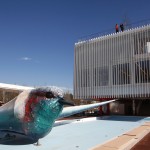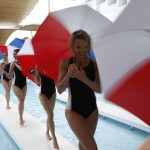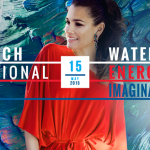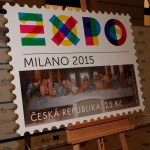Prague seems to have guessed the right moves for its pavilion at Milan universal exhibition
This is what the Czech Republic has to exhibit to the world: the best of a Country that is able to renew itself
It is a modern metamorphosis that welcomes visitors to the Czech Republic pavilion at Expo 2015. The surrealist sculpture by the artist Lukáš Rittstein, consists of an automobile that blends into a bright blue plumage bird. But beyond the image there lies the symbol: the encounter between technology and nature.
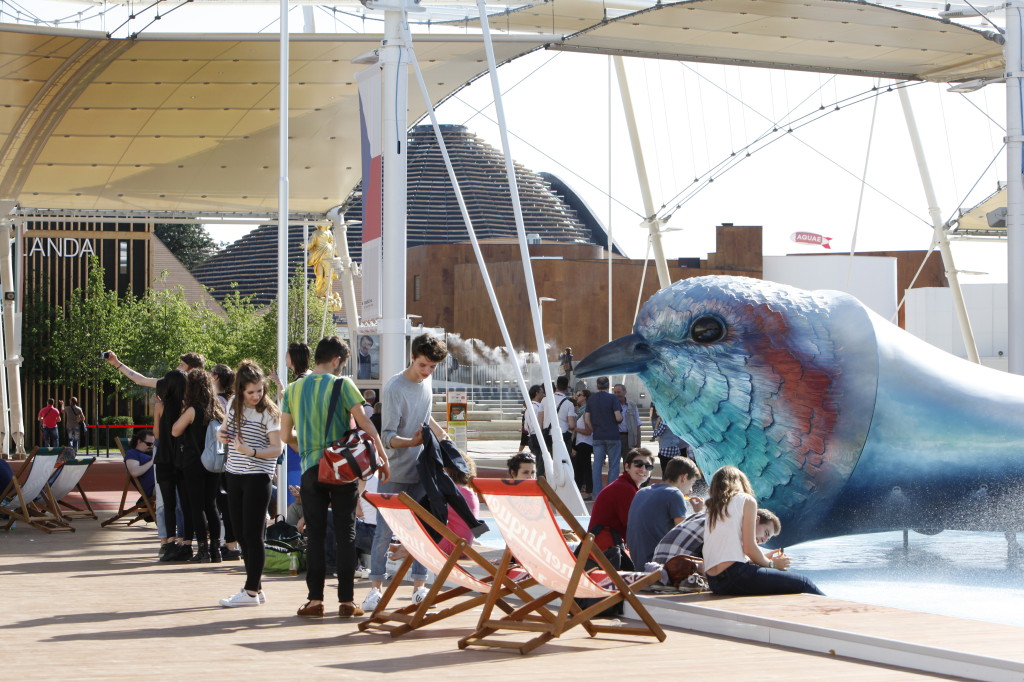 The automobile, the device, is placed on the side of the passenger. Steering it is the natural element, an animal whose long wing covers the entire width of the pool, where the sculpture is set. On the inside there is a nanotechnology system that purifies the water of the pool that overlooks the impressive open space in front of the central pavilion. It is precisely on the dualism between technology and nature that the Czech Republic has decided to focus on, to respond to the broad theme of the great Universal Exhibition in Milan: Feeding the planet, energy for life. And on the presence of water as a strong central element: certainly a reference to the sources of mineral waters and the numerous hot springs scattered throughout Czech territory. But there is more to it. The idea of the pool, says Pavel Hrůza, one of the designers of the pavilion: “is a tribute to the impressive Czech functionalist architecture of the Twenties and Thirties, which inspired this construction. At the time, swimming pools were very popular and buildings used to be built in a white purist style”. And to make this space even more welcoming, it couldn’t lack the symbolic product of the country: the Pilsner Urquell, served non-stop at the open-air bar on the side of the pool. Sold at the price of six Euros, the “blonde” beer is soon appreciated by thousands of visitors to the pavilion – which reaches an average of 11 thousand visitors a day – in search of refreshments in the only area at Expo that has a pool. The number of people coming and going between the deck chairs and the bar is really high and the general atmosphere is that of an open-air pub in full summer. “Visitors to other national pavilions will surely remember the long queues they were subject to before entering. Instead, in our pavilion the sensation is a refreshing one, also thanks to the possibility of cooling off in the pool, followed by a nice refreshing, cold Bohemian drink”, Czech General Commissioner Jiří Potužník says with great satisfaction. That the right choice was made is also confirmed, with a certain amount of surprise, even by Bohumil Bochňák, responsible for Czech catering, “In just over two days, we sold out all the beer that was supposed to last for ten days”. It was also due to the fact that it was May 15, the national day of the Republic, that saw a record flow of over 26 thousand visitors.
The automobile, the device, is placed on the side of the passenger. Steering it is the natural element, an animal whose long wing covers the entire width of the pool, where the sculpture is set. On the inside there is a nanotechnology system that purifies the water of the pool that overlooks the impressive open space in front of the central pavilion. It is precisely on the dualism between technology and nature that the Czech Republic has decided to focus on, to respond to the broad theme of the great Universal Exhibition in Milan: Feeding the planet, energy for life. And on the presence of water as a strong central element: certainly a reference to the sources of mineral waters and the numerous hot springs scattered throughout Czech territory. But there is more to it. The idea of the pool, says Pavel Hrůza, one of the designers of the pavilion: “is a tribute to the impressive Czech functionalist architecture of the Twenties and Thirties, which inspired this construction. At the time, swimming pools were very popular and buildings used to be built in a white purist style”. And to make this space even more welcoming, it couldn’t lack the symbolic product of the country: the Pilsner Urquell, served non-stop at the open-air bar on the side of the pool. Sold at the price of six Euros, the “blonde” beer is soon appreciated by thousands of visitors to the pavilion – which reaches an average of 11 thousand visitors a day – in search of refreshments in the only area at Expo that has a pool. The number of people coming and going between the deck chairs and the bar is really high and the general atmosphere is that of an open-air pub in full summer. “Visitors to other national pavilions will surely remember the long queues they were subject to before entering. Instead, in our pavilion the sensation is a refreshing one, also thanks to the possibility of cooling off in the pool, followed by a nice refreshing, cold Bohemian drink”, Czech General Commissioner Jiří Potužník says with great satisfaction. That the right choice was made is also confirmed, with a certain amount of surprise, even by Bohumil Bochňák, responsible for Czech catering, “In just over two days, we sold out all the beer that was supposed to last for ten days”. It was also due to the fact that it was May 15, the national day of the Republic, that saw a record flow of over 26 thousand visitors.
And it is with this joyful mix of art, jugs of beer and relaxation beside the pool, that visitors are invited to enter the central structure. A contemporary, squared architectural design, that is environmentally sustainable and built according to the modular assembly system. Even before the inauguration of the exhibition, the Czech pavilion had already achieved its first success: when most of the other structures were still under construction and the building yards were open day and night, the Czech Republic pavilion was the first to be ready, thirty days before the inauguration. The project, which was developed on three floors, cost “only” 8 million euro and was built by young architects from the Chybik+Kristof studio in Brno. Assembled in just three months, the structure will be dismantled quickly, once the Universal Exhibition is over, and its modules will be used again to construct new buildings, according to environmental sustainability standards. While entering, the impression is that of being immersed into a padded environment, a sculpture by Maxim Velčovský made of suspended bundles of glass fibers hangs over the entrance stairway: the effect is that of a digital waterfall rippled by the wind. Guests are first welcomed into the Laboratory of silence, the first exhibition room. In this vegetation room, nature and technology coexist to give birth to a hybrid, where multimedia is integrated into the world of plants. A reproduction of several Czech forests is explored by means of micro cameras that project the images onto a number of plasma screens. Visitors are thus given a microscopic view: plants and mosses of the undergrowth can be seen and appreciated in millimetric detail. The exhibition continues upstairs in the Laboratory of life, where art, chemistry and new technologies share the exhibition space. A second sculpture by Rittstein, based on the style of the main entrance, represents a metamorphosis between a bird and a horse while, hanging from the top, is a large Plexiglas cell, a futuristic sculpture by the artist Jakub Nepraš. Internal processes of healthy and diseased cells are projected onto the art structure. Science is displayed on the walls of the hall: the research work of several Czech institutes are shown to the public, from water purification, obtained by means of nanofibers, to the genetic codes of different plant species. Then, as in all the other pavilions, there is a hall dedicated to regional excellences, which here is called the Land of Stories and Fantasy. In this room the different regions take turns in offering local products and local specialties: the first region to be presented to the public is, currently, that of South Moravia and the city of Brno.
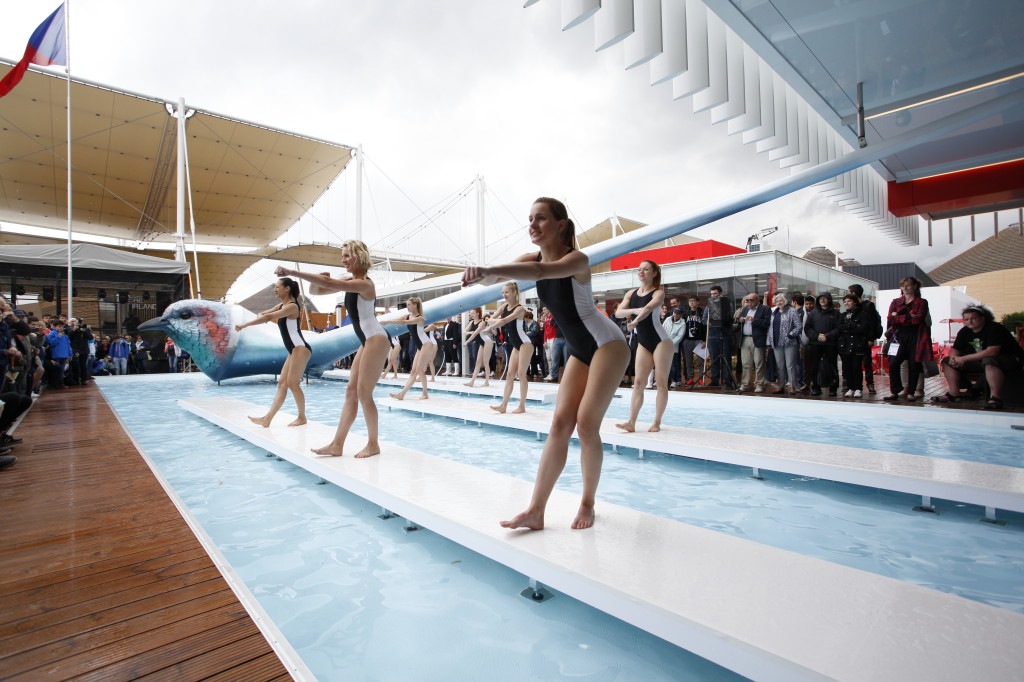 But to appreciate other Czech specialties, it is mandatory to visit the restaurant The Hunter’s Refuge, decorated in a minimalist style with a traditional and gastronomic menu: among the dishes, the most successful ones are certainly the game dishes, consisting of venison steaks. Even the famous smažený sýr, fried cheese, is highly appreciated by customers. All the main dishes cost from 21 to 29 euro. “We tasted various dishes: goulash and game soup, as well as venison steak and pheasant cutlet. We really appreciated both the way in which the products were presented, as well as their quality”, explains Bruno enthusiastically – who for 35 euro was able to enjoy an excellent Czech lunch, accompanied by a Pilsner Urquell beer and a glass of Becherovka at the end of the meal. The general comments made by customers on the internet all tend to say the same thing: good dishes and great desserts. In the afternoon, a mandatory visit to the roof of the pavilion, which has an outdoor terrace consisting of a garden that, according to many visitors, is one of the best of the event. This is a privileged view overlooking the entrance pool that livens up during the evening with lights, music and attractions. This is what the Czech Republic has to exhibit to the world: the best of a Country that is able to renew itself and look to a future of harmony between nature, technology and art, but also aware and proud of its traditions and pleasures, from the table to a mug of beer that is always full.
But to appreciate other Czech specialties, it is mandatory to visit the restaurant The Hunter’s Refuge, decorated in a minimalist style with a traditional and gastronomic menu: among the dishes, the most successful ones are certainly the game dishes, consisting of venison steaks. Even the famous smažený sýr, fried cheese, is highly appreciated by customers. All the main dishes cost from 21 to 29 euro. “We tasted various dishes: goulash and game soup, as well as venison steak and pheasant cutlet. We really appreciated both the way in which the products were presented, as well as their quality”, explains Bruno enthusiastically – who for 35 euro was able to enjoy an excellent Czech lunch, accompanied by a Pilsner Urquell beer and a glass of Becherovka at the end of the meal. The general comments made by customers on the internet all tend to say the same thing: good dishes and great desserts. In the afternoon, a mandatory visit to the roof of the pavilion, which has an outdoor terrace consisting of a garden that, according to many visitors, is one of the best of the event. This is a privileged view overlooking the entrance pool that livens up during the evening with lights, music and attractions. This is what the Czech Republic has to exhibit to the world: the best of a Country that is able to renew itself and look to a future of harmony between nature, technology and art, but also aware and proud of its traditions and pleasures, from the table to a mug of beer that is always full.
by Edoardo Malvenuti





